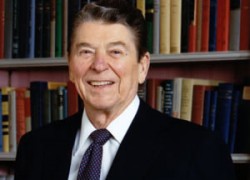
A series of talks on how the impending fiscal cliff might be avoided kicked off when President Obama and congressional leaders met for their first meeting the two weeks ago. House Speaker John Boehner (R-OH) restated his vow to accept higher revenues—but only if they resulted from tax reform generating a stronger economy, and thus more revenue. He added that any additional revenue must be accompanied by cuts to entitlement programs such as Social Security, Medicare and Medicaid. With just weeks before the end-of-the-year deadline—when a series of tax hikes are set to take effect just as billions in automatic spending cuts stipulated in the 2011 debt ceiling deal take effect—the fiscal policy stakes have never been higher.
Just a short time ago in his post-election remarks, Speaker Boehner pointed to the bipartisan Tax Reform Act of 1986 as the model for what is possible:
There is an alternative to going over the fiscal cliff, in whole or in part…A stronger economy means more revenue, which is what the president seeks…There’s a model for tax reform that supports economic growth. It happened in 1986 with a Democratic House run by Tip O’Neill and a Republican president named Ronald Reagan.
So why this hearkening back to 1986? What happened?
- The Tax Reform Act of 1986 was a bipartisan effort to reform the tax system.
- As of 2012, it is the most recent major simplification of the tax code.
- It reduced the top individual rate from 50 percent to 28 percent and the top corporate rate went down from 48 percent to 34 percent.
- It reduced rates without reducing revenues by broadening the bases of both the individual and corporate income taxes—by eliminating the wide variety of tax deductions, credits, and similar special provisions.
When Ronald Reagan signed the Tax Reform Act of 1986 into law, he said: “Fair and simpler for most Americans, this is a tax code designed to take us into a future of technological invention and economic achievement, one that will keep America competitive and growing into the 21st century.”
What happened next? Many argue the Tax Reform Act of 1986 ushered in a more economically neutral tax system, which in turn strengthened the economy for the long run and ultimately meant more revenues for the government.
With presidential leadership, the conditions may be right for another sweeping reform of the tax system. Certainly, there is a growing bipartisan interest in corporate income tax reform. If so, the 1986 law offers a fair model.
Source material can be found at this site.









